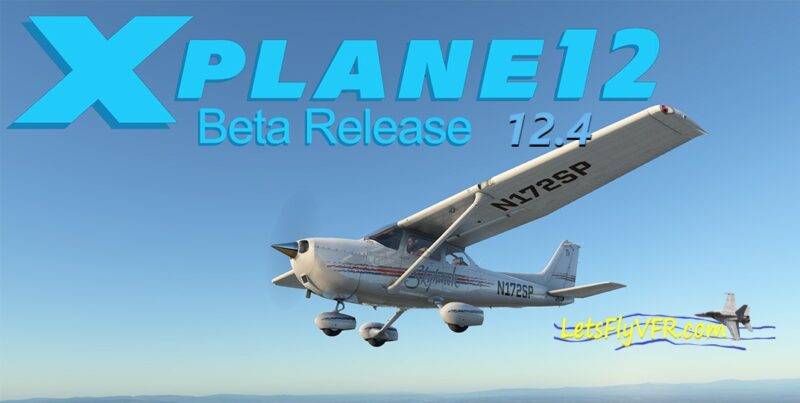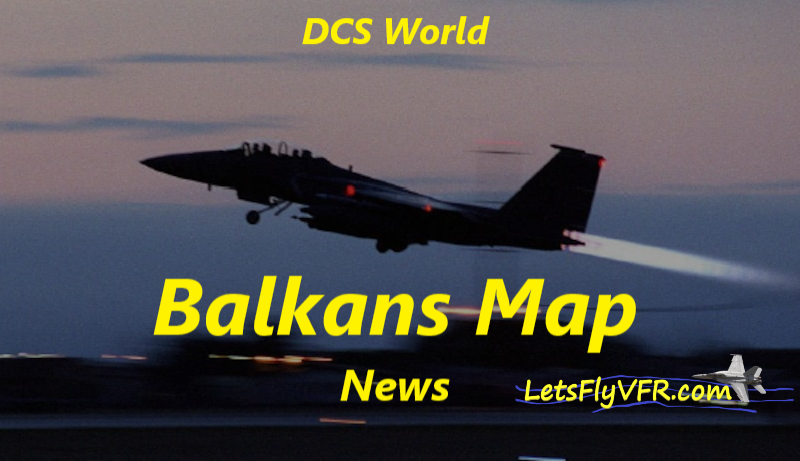Mastering the Skies: A Beginner’s Guide to Flight Simulator Controls! Soar like a Professional!
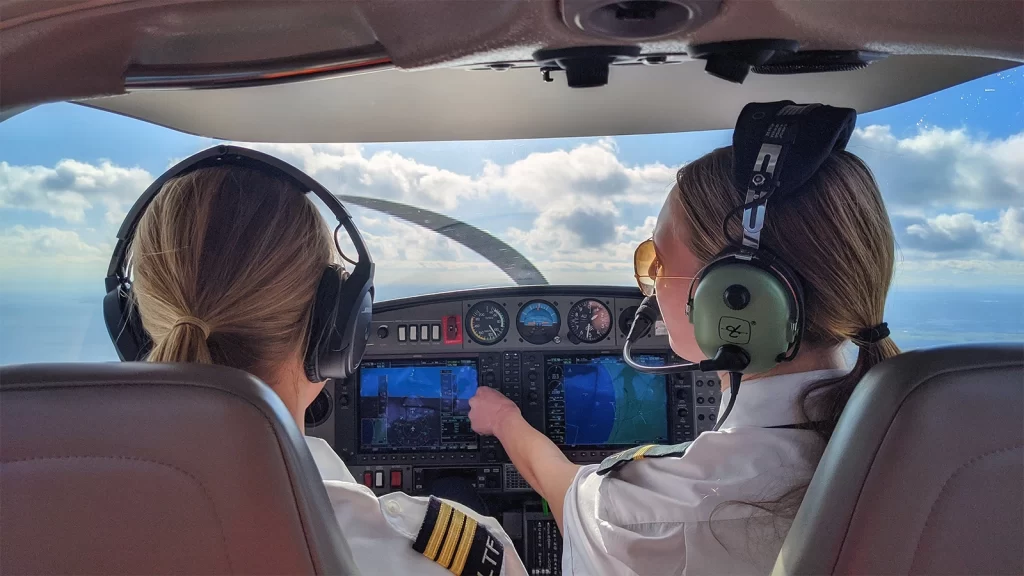
Are you a real world or a simulator pilot? Understanding your flight simulator controls is imperative to you being both proficient and safe pilot. In your mastery of flying your favourite aircraft in the real world or at home, the coordination of your Aileron, Elevator and rudder controls is essential. Simulator pilots often disregard the rudder as a superfluous control but I can assure you its so much more important than you currently think.
Flight Controls. What are they & How do they Work?
Flight controls are critical components of an aircraft that allow the pilot to maneuver and control the aircraft’s attitude (orientation in space) and direction of flight. These controls include the primary flight controls (ailerons, elevator, and rudder) and secondary flight controls (flaps, slats, spoilers, and trim systems). Here’s an overview of how these controls work:

- Primary Flight Controls:
- Ailerons: Ailerons are located on the wings, one on each side of the aircraft. They control the roll of the aircraft, causing it to bank left or right. When the pilot moves the control wheel or stick to the right, the right aileron goes up while the left aileron goes down, creating more lift on one wing and less on the other, which results in a roll to the right.
- Elevator: The elevator is typically located on the horizontal tail or stabilizer of the aircraft. It controls the pitch or nose-up/nose-down attitude of the aircraft. When the pilot pulls back on the control wheel or stick, the elevator moves upward, causing the aircraft’s nose to pitch up, and vice versa.
- Rudder: The rudder is situated on the vertical tail or fin at the rear of the aircraft. It controls the yaw or side-to-side movement of the aircraft. When the pilot pushes on the rudder pedals, the rudder moves left or right, creating a yawing motion by increasing drag on one side of the tail.
- Ailerons: Ailerons are located on the wings, one on each side of the aircraft. They control the roll of the aircraft, causing it to bank left or right. When the pilot moves the control wheel or stick to the right, the right aileron goes up while the left aileron goes down, creating more lift on one wing and less on the other, which results in a roll to the right.
- Secondary Flight Controls:
- Flaps: Flaps are located on the trailing edge of the wings. They can be extended or retracted to change the wing’s lift and drag characteristics. Flaps are typically used during takeoff and landing to increase lift and reduce landing speed.
- Slats: Slats are movable surfaces on the leading edge of the wings. They enhance lift and control at low speeds, such as during takeoff and landing. Slats help delay the onset of stall by allowing the wing to maintain lift at higher angles of attack.
- Spoilers: Spoilers are small panels on the wing’s upper surface. They disrupt the airflow over the wing, reducing lift. Pilots use spoilers to control descent rates and to increase drag for rapid descents or to assist in landing.
- Trim Systems: Trim systems are used to relieve the constant control pressures required to maintain a specific attitude. Pilots can adjust the trim tabs on the control surfaces to keep the aircraft in a stable flight condition without constant manual control inputs.
- Flaps: Flaps are located on the trailing edge of the wings. They can be extended or retracted to change the wing’s lift and drag characteristics. Flaps are typically used during takeoff and landing to increase lift and reduce landing speed.
How They Work: Flight controls work by altering the airflow over the aircraft’s surfaces. By changing the shape or orientation of control surfaces, pilots can influence the distribution of lift and drag on the aircraft. For example, moving the control wheel or stick results in mechanical linkages that move the ailerons, elevator, or rudder accordingly.
The pilot’s inputs are translated into changes in control surface positions, which, in turn, cause changes in the aircraft’s attitude and direction. Proper coordination of these controls allows the pilot to navigate, maneuver, and maintain stable flight.
In modern aircraft, these controls can be mechanically connected to the control surfaces, or they can be electronically operated, with fly-by-wire systems translating pilot inputs into electronic signals that control the aircraft’s actuators and surfaces. These systems offer greater precision and control, especially in larger and more complex aircraft.
- Joystick / HOTAS – AMAZON.com
- Rudder Pedals – AMAZON.com
- Throttle Quadrant – AMAZON.com
- Gaming Chair – AMAZON.com
- VR Headset – AMAZON.com
Flight Simulator Controls – The Rudder Is Your Friend!
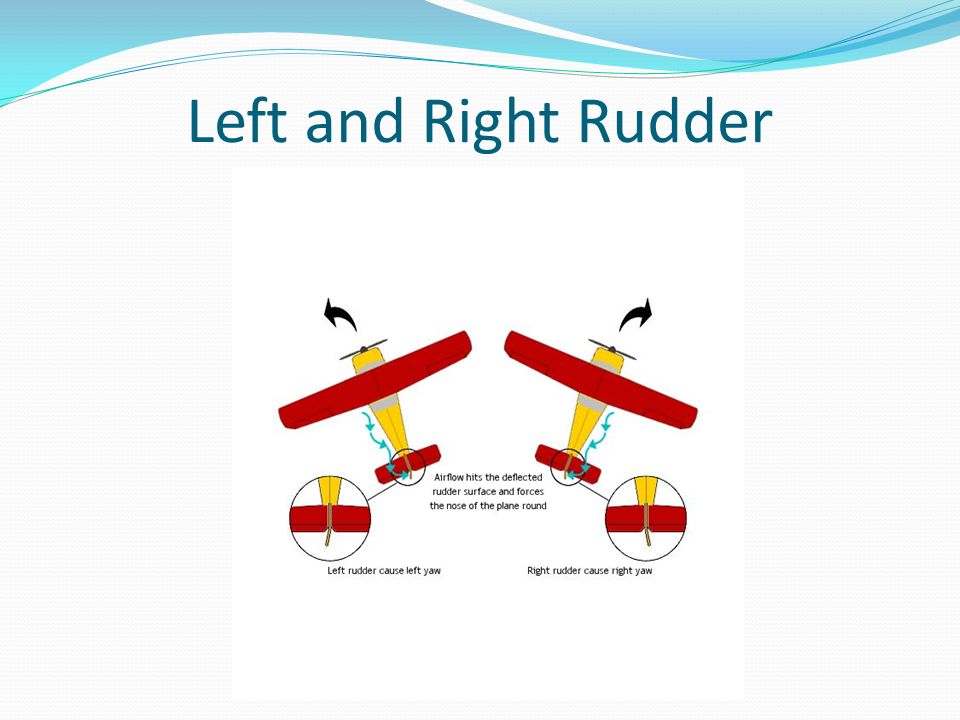
The correct rudder inputs alongside aileron and elevator make your flying safe, smooth and more enjoyable. If you currently fly a simulator and have the rudder on auto, then you’re truly missing out on the real-world flying experience you likely strive to experience!
Like many I didn’t really get the importance of the rudder in my sim flying before taking the leap into Light Sport aviation flying primarily Australian built Jabiru models from the 160/170 and the more powerful 230 models. This is where I discovered fast my feet needed to dance some on the pedals in situations like crosswind landings as well as take offs.
Being efficient when turning and ensuring my instructor didn’t poke me in the ribs when I was not coordinated in my turns. If you’re not aware this often makes passengers unwell because the fluid in your inner ear gets pushed to the outside of the turn when your eyes tell you’re essentially going straight.
Ok what is this ball I keep mentioning? The ball is part of the slip/coordination instrument in the cockpit. All aircraft have one and what it does is ensures no matter if you’re flying straight and level, turning or often a combination of these you ensure the aircraft is flying directly into the wind with no YAW on the aircraft.
Yaw is when the rear of the aircraft is sliding to the left or right of the flight path of the aircraft. This gives your stomach an uncomfortable feeling because your eyes think you’re going straight when your stomach and inner ear know your essentially slipping around the corner.
Why You Shouldn’t Fly Uncoordinated.
Flying an aircraft uncoordinated, specifically experiencing what’s known as “uncoordinated flight” or flying with a lack of coordination between the aircraft’s longitudinal and lateral axes, can make passengers sick due to a phenomenon called motion sickness. Here’s a simplified explanation:
- Motion Mismatch: Our inner ear, or vestibular system, plays a crucial role in maintaining our sense of balance and spatial orientation. It senses motion and helps our brain understand our position in relation to gravity. When you’re flying an aircraft, especially in turbulent conditions or during manoeuvres, your body might experience motion that doesn’t match what you see or feel in the cabin.
- Visual and Vestibular Conflict: In uncoordinated flight, your aircraft may be rolling, pitching, or yawing in a way that doesn’t align with what passengers see out the window or feel inside the cabin. For example, if the aircraft is rolling left but passengers feel like they are still, or if there’s yawing or side-to-side movement, it can create a conflict between visual and vestibular inputs.

- Motion Sickness Symptoms: This conflict between what you see and what your inner ear senses can lead to motion sickness symptoms, which may include nausea, dizziness, sweating, and discomfort. The brain receives conflicting information about your motion and may interpret it as a potential threat, leading to the sensation of feeling sick.
- Severity and Duration: The severity and duration of motion sickness can vary from person to person. Some individuals are more susceptible to motion sickness than others. Factors such as turbulence, abrupt maneuvers, or prolonged uncoordinated flight can increase the likelihood and intensity of motion sickness.
- Prevention and Remedies: To prevent motion sickness in flight, passengers can try to look at the horizon or focus on a stable point outside the aircraft, maintain proper hydration and avoid heavy or greasy meals before flying. Additionally, using motion sickness remedies like medication or wristbands designed to alleviate symptoms can be helpful for some individuals.
So, flying an aircraft uncoordinated can make passengers sick because it creates a disconnect between what they see and what their inner ear senses, leading to motion sickness symptoms. Reducing or eliminating uncoordinated flight manoeuvres and turbulence can help minimize passenger discomfort during a flight.
Flight Simulator Controls – Flying the Ball.
So, flying the ball is an important skill as we have just started to explore. There are important reasons why you should focus on your rudder control in normal flight and with aerobatic as well as combat simulator flying in DCS World. Once you can appreciate its importance, I’m sure you’re going to be saying to yourself ” Wow, I better get some Rudder Pedals!”
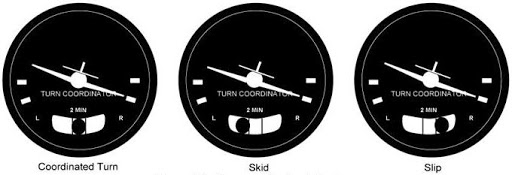
Poor rudder control can lead to sick passengers but also dead ones! Yes, the improper use of rudder kills pilots and their passengers as well as innocent people on the ground far to regularly! It can also just cost you extra fuel because you’re creating more drag as you fly in cruise or climb/decent phases of flight. Every time the ball is not centred its saying one side of the aircraft is being used as an airbrake creating extra drag on the airframe costing you fuel, speed as well as time. You wouldn’t drive for an hour sliding your car on the way to a friend’s house, would you? I would expect not so don’t slide your aircraft and save a lot in fuel, time and speed.
Let’s Torque about P Factor & Rudder!
If you’re not aware of P Factor, it’s time to learn some new stuff! The torque from your engine or engines spin and are attached to a somewhat stationary point on the firewall of the aircraft. This torque is fed to the propeller which then acts to push the air the propeller grabs backwards and with mister Einstein’s equation every action has an opposite reaction so there is a twisting force put back into the aircraft.
The action of the air flowing around the aircraft fuselage after the prop pushes it back is not a straight line! No, the air rotates around the aircraft like a corkscrew and eventually hits the opposite side of your vertical tail! This along with the torque acting on the airframe has the combined effect of trying to push a single engine Cessna 172 to the left as the propeller spins clockwise as viewed by the pilot.
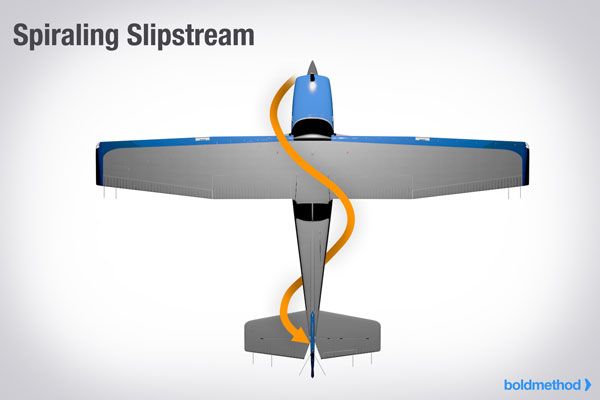
So how can we neutralise this effect when we want to fly straight? Well as we apply power, we must do it somewhat gradually. In doing so we are able to get some airflow over the rudder at the back and we apply right rudder to counter the desire of the aircraft to go left and leave the runway!
If your aircraft has nose wheel steering the nose wheel will also help while slow and there is not enough air passing the rudder for it to be effective. This still means pushing the right rudder quite a bit initially and reducing pressure as the aircraft accelerates.
Now you have got an understanding of rudder use in take-off let’s look at crosswind landings and see how the rudder is required there.
- Latest CPU’s Available Now – Amazon.com
- Get a NEW GPU Best Performance – AMAZON.com
- Upgrade RAM Here today – AMAZON.com
- Prebuilt PC Options – AMAZON.com
CRAB or SIDE SLIP – Crosswind Flight Simulator Controls Options.
The crosswind landing is certainly a place where coordinated flight simulator controls are required. Getting the balance correct between aileron and rudder comes in a couple different options. Like many things in flying there are often at least two points of view. In crosswind landings there ar two schools of thought Im aware of.
1.) Fly in line with the centreline of the runway with the wind side wing down a little and Rudder to counteract the drift. It’s essentially adding enough bank into the wind to neutralise the drift the wind is applying to the aircraft.
2.) Fly the centreline of the runway but allow the aircraft to point into the wind so you’re in a crab ie Nose pointing into the wind to counteract the wind drift but flying down the extended centreline of the runway. Use your controls to maintain your track to the runway using the rudder to align the aircraft with the runway as you flare to touch down.

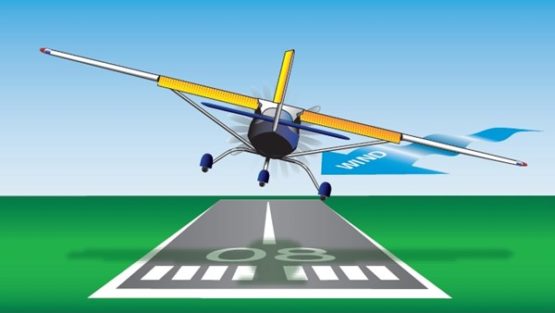
Here is a more In-depth explanation of these two techniques that you can apply with your own flight simulator controls.
Two main crosswind landing techniques taught to students and used by pilots are the “crab” technique and the “side-slip” or “slip” technique. Let’s explore both methods, their differences, and their applications:
- Crab Technique:
- Description: In the crab technique, the aircraft approaches the runway with its nose pointed into the wind to maintain a straight ground track. This means the aircraft is not aligned with the runway’s centerline; it’s flying slightly sideways (crabbing) to counteract the crosswind’s effect on its path.
- Execution: As the aircraft approaches the runway threshold, the pilot transitions from the crabbed approach to aligning the aircraft’s longitudinal axis with the runway centerline just before touchdown, using the rudder to “kick out” the crab and straighten the aircraft.
- Advantages: It’s a relatively straightforward technique and is commonly taught to student pilots.
- Disadvantages: The transition from crab to aligning with the runway can be challenging, and there’s a risk of landing gear damage if the aircraft touches down with excessive crab angle.
- Side-Slip Technique (or Slip Technique):
- Description: In the side-slip technique, the aircraft approaches the runway with its longitudinal axis aligned with the runway centerline but is deliberately “slipped” or “yawed” into the wind using the rudder. This results in the aircraft maintaining a straight ground track while being visibly skewed relative to the runway.
- Execution: The pilot uses rudder input to keep the aircraft’s nose aligned with the runway centerline while using aileron input to maintain lateral position on the centerline. This technique requires constant coordination of rudder and aileron inputs.
- Advantages: It allows for precise control of both lateral and longitudinal alignment with the runway, reducing the need for a last-minute transition.
- Disadvantages: It can be more challenging for student pilots to master due to the need for precise coordination of control inputs.
Which Technique is Better?

Which Technique is Better? The choice between the crab and side-slip technique depends on various factors, including the aircraft type, pilot skill level, wind conditions, and company or regulatory policies. There isn’t a definitive “better” technique; it’s more about what works best in a given situation:
- Crab Technique: It’s often used in larger commercial aircraft, especially during gusty or strong crosswind conditions. The transition to align with the runway can be smoother in these aircraft.
- Side-Slip Technique: It’s commonly taught in flight training and is favored by some pilots for its precision, especially in smaller general aviation aircraft. Some airline pilots also use this technique, particularly in smaller regional aircraft.
Ultimately, the choice of technique depends on the pilot’s proficiency, the aircraft’s capabilities, and the specific conditions at the time of landing. Pilots receive training in both methods and select the one that best suits the situation to ensure a safe and controlled landing in crosswind conditions.
I hope this is helping you appreciate the many different options for flying aircraft and all the control inputs required to achieve safe flight.
ADVERSE YAW – A KILLER on a WEEKLY Basis!
Adverse Yaw, my friends if you know many pilots there’s a good chance you know someone who is no longer with us because of this phenomenon! It’s not anything magical but it surely is super deadly! So, what is adverse yaw and what does it do? How do you need to manage your flight simulator controls to stay alive!
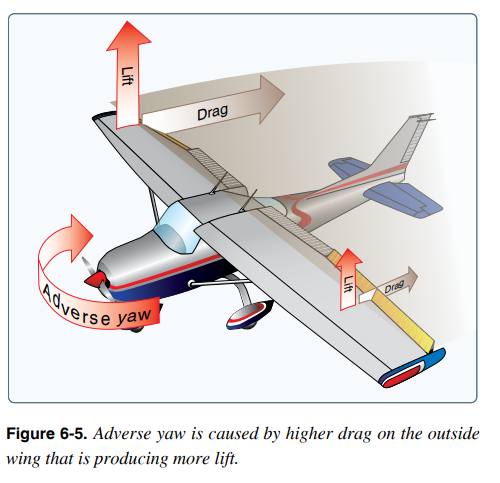
The most common place this kills pilots of all experiences and yes you can experience it in a flight simulator for sure! I have a few videos on my Let’s Fly VFR YouTube channel showing just how easy it is to achieve. Adverse yaw often rears its head when pilots are climbing or turning onto final with excessive AOA.
Trying to climb to fast and entering a stall without keeping the ball in the middle as it should be! Yes, that little black ball has a lot to do with safety and your survival. In the case of an excessively steep climb if when the stall warning sounds you relax the stick pressure and reduce the angle of attack as well as have the aircraft coordinated you could certainly survive.
Sadly, often this does not happen and the aircraft stalls, the uncoordinated flight can then lead to an adverse yaw condition where the high wing stalls and the aircraft spins uncontrollably into the ground in the opposite direction to any turn.
The turn to final is more common for ADVERSE YAW conditions to present themselves. I’ve been here and I didn’t realise just how close I came to killing myself and my passenger so please take note! Descending at low power and making a left turn onto final is quite common but what if you overshoot the centreline of the runway? Go AROUND – Go AROUND!
Sadly, into many occasions the pilot will make a left turn that is even tighter than it was and seeing they are needing more turn push the left rudder in an attempt to turn the aircraft even faster to get back! Deadly Deadly Deadly! You have to understand this is about to kill you! In doing this the aircraft is in a Left turn with the right wing getting close to critical AOA while the left/lower wing remains well inside AOA limits.
With the stall warning normally only on one side the stall warning may not sound. In adding additional rudder to try and increase the turn rate you push the right wing beyond its CRITICAL AOA and the right-wing stalls violently and while turning left you shockingly find yourself falling and spinning to the RIGHT WAY from the direction you were trying to achieve! Your dead in seconds unfortunately because at several hundred feet the survival of the stall spin in ZERO!
What’s Next?
In a future blog post we will look at the control inputs for aerobatics and air combat that can offer a totally new experience for you with a greater appreciation of coordinated flight simulator controls. Its amazing once you appreciate the ballet required with your joystick, yoke and rudder coupled with power inputs to create a delicate or event violent reaction to your control inputs.

Author.
Brendon McAliece is a multi-lingual expat who brings over three decades of flight simulator/PC building experience as well as over two decades of real-world jet fighter experience as a weapons/egress technician.
He holds a sport pilot certificate giving him real-world flying experience. His travels have taken him from Europe to the Middle East, Asia and his home of Australia. He has a passion for travel, languages, Flight simulation as well as Guitaring and Coffee. You can read more in his blogs below.
Learn More @ DreamingGuitar.com – DreamingCoffee.com – LetsFlyVFR.com
( HOME – BLOG – SHOP – ABOUT )
As an Amazon affiliate I may benefit from qualifying sales.




